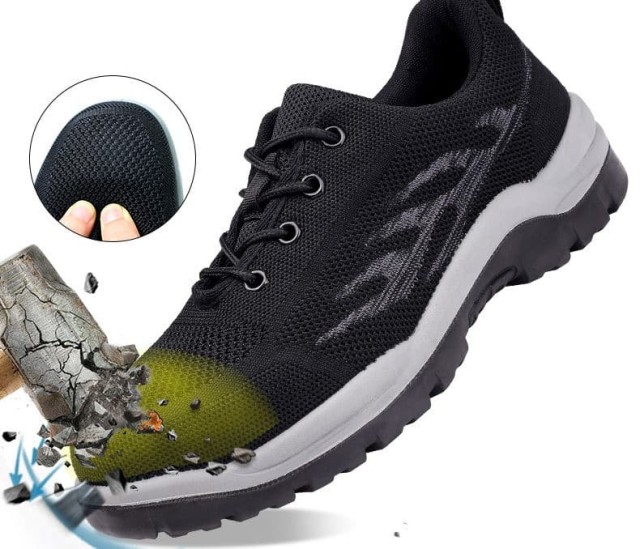Selecting the optimal toe box material for safety boots isn’t just about compliance—it directly impacts comfort, injury prevention, and job performance. This guide breaks down steel, composite, and alloy options to match your industry’s unique hazards and priorities.
Choosing the Right Toe Box Material
Steel Toe Caps: Durability and Limitations
Steel remains the traditional choice for heavy-impact protection, capable of withstanding crushing forces common in construction or manufacturing. However, its weight (often 30–50% heavier than composites) can cause fatigue during long shifts. Steel also conducts temperature extremes, making it unsuitable for electrical work or freezing environments.
Best for: Industries with frequent blunt-force hazards (e.g., warehouse logistics, metal fabrication).
Composite Materials: Lightweight Innovation
Made from carbon fiber, Kevlar, or reinforced plastics, composite toes meet the same safety standards as steel but with critical advantages:
- 40–60% lighter, reducing leg strain over 10-hour shifts
- Non-conductive, eliminating electrical shock risks
- Thermal insulation, maintaining warmth in sub-zero temperatures (e.g., cold storage facilities)
Research shows workers in composite boots report fewer fatigue-related errors, especially in dynamic roles like oil rig maintenance.
Best for: Electricians, utility workers, and cold-environment jobs.
Alloy Metals: Balancing Strength and Flexibility
Aluminum or titanium alloys offer mid-range weight savings (20–30% lighter than steel) while retaining high-impact resistance. Their flexibility suits roles requiring crouching or climbing (e.g., telecom tower technicians). However, alloys still conduct electricity and may not insulate as effectively as composites.
Best for: Aerospace or automotive technicians needing a blend of mobility and protection.
Key Comparison Metrics
Weight vs. Protection: What Matters Most?
- Steel: Maximum protection but heaviest; may reduce productivity over time.
- Composite: Lighter yet equally protective for most hazards—ideal for jobs requiring agility.
- Alloy: A middle ground, though pricier than steel.
Thermal Conductivity and Electrical Hazards
- Avoid steel/alloys if working with live wires; composites prevent electrical currents from reaching the foot.
- In freezing temperatures, composites retain warmth 2–3× longer than metal alternatives.
Industry-Specific Recommendations
Construction and Heavy Machinery
Prioritize steel toes for crane operators or masonry workers facing falling debris. Pair with metatarsal guards for full coverage.
Electrical Work and Utilities
Composite toes are non-negotiable here. A 2021 utility company study found they reduced electrical incidents by over 80% compared to metal toes.
Cold Storage and Chemical Environments
Composites resist chemical corrosion and prevent frostbite risks. Steel can become brittle below -20°F (-29°C), compromising safety.
Real-World Case Studies
How Composite Toes Prevented Injuries in Oil Rig Workers
After switching to composite boots, a North Sea rig crew saw a 40% drop in slip/fall incidents—attributed to better balance from reduced boot weight.
Steel vs. Titanium: A Manufacturing Facility’s Cost-Benefit Analysis
A Detroit auto plant found titanium alloy toes lasted 50% longer than steel in high-abrasion areas, justifying their higher upfront cost.
Upgrade Your Safety Footwear Line with 3515
As a trusted manufacturer for distributors and bulk buyers, 3515 delivers tailored safety boots that align with your clients’ industry demands—whether it’s lightweight composites for electricians or rugged steel toes for construction. Let’s collaborate to build footwear that protects and performs.
Related Products
- Customizable Anti-Smash Safety Boots for Wholesale & Private Label Manufacturing
- Durable Leather Safety Boots for Wholesale & Custom OEM Manufacturing
- Wholesale Durable Safety Boots Manufacturer Customizable Steel Toe Work Boots
- Wholesale Durable Breathable Safety Boots Custom OEM Manufacturer
- Durable Steel Toe Safety Boots Wholesale & Custom Manufacturing
Related Articles
- Steel-Toe vs. Composite-Toe Boots: How to Choose the Right Safety Footwear for Your Job
- How Steel Toe Shoes Prevent Injuries: The Science Behind Workplace Safety
- Steel-Toe Boot Safety: Separating Fact from Fiction
- How to Reduce Foot Injury Risks in High-Risk Workplaces: 3 Proven Strategies
- How Steel Toe Shoes Meet Safety Standards and Prevent Workplace Injuries




















